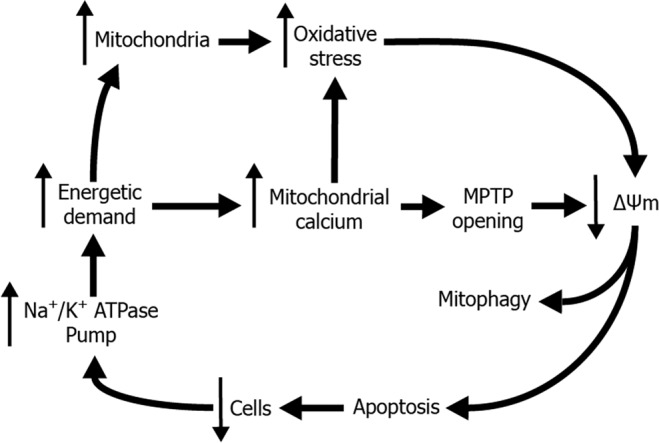Figure 1.

Vicious cycle of FECD pathogenesis. The CEC Na+K+−ATPase pump, required to maintain corneal deturgescence, uses 30% of the cellular ATP, this high energetic demand is met by increasing the number of mitochondria and/or by increasing mitochondrial calcium intake. However, this leads to oxidative stress and/or the formation of mitochondria permeability transition pores [MPTP], resulting in a loss of mitochondrial membrane potential [↓Δψm] and elimination of altered mitochondria by mitophagy or induction of cell death by apoptosis. When FECD CEC die [↓ Cells], the amount of energy globally required to maintain corneal deturgescence remains the same, therefore increasing ATP demand on remaining cells, in turn promoting mitochondrial exhaustion. Although all cells are not affected to the same degree, each additional cell death feeds the vicious cycle.
